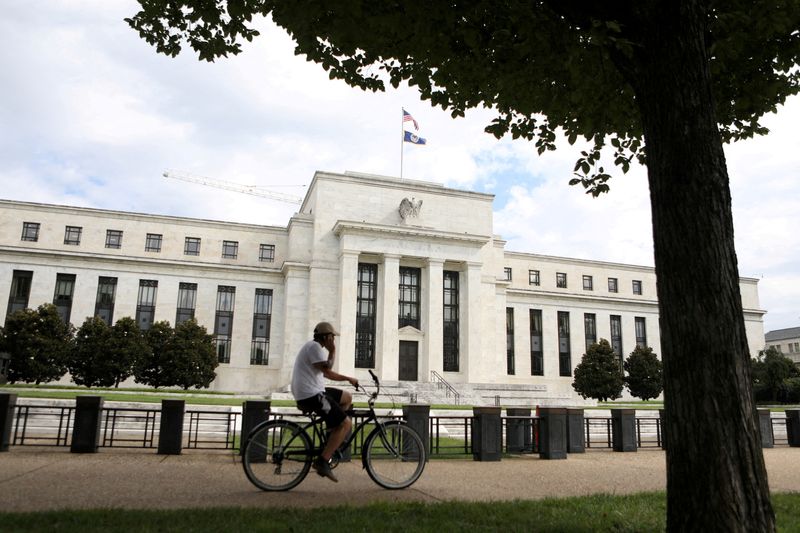(Reuters) -Federal Reserve officials are widely expected to leave their benchmark interest rate unchanged at their Oct. 31-Nov. 1 meeting next week, a move that would mark the first back-to-back policy meetings with no rate hike since they began their tightening campaign in March 2022.
Since then, the Fed has increased its target rate to 5.25%-5.50% range from near zero. Inflation measured by the central bank's preferred Personal Consumption Expenditures Price Index (PCE) was 3.4% in September, compared with a peak of 7.1% last summer.
Fed Chair Jerome Powell has said the pieces of the low-inflation "puzzle" may be aligning, though the central bank hasn't declared its inflation fight over.
Here is a guide to some of the numbers shaping the policy debate:
INFLATION (PCE released Oct. 27; next CPI release Nov. 14):
The PCE index for September was among the final pieces of data arriving before policymakers convene next week, and like the other main gauge of U.S. inflation published earlier in the month - the Consumer Price Index - it underscored how sticky inflation is proving to be.
The headline readings of both PCE and CPI on a year-to-year basis have shown no material progress back toward 2% since June. The month-to-month readings in that period have largely moved sideways as well, at rates that remain inconsistent with inflation slowing to 2% anytime soon.
That said, annual measures of core inflation for both, gauges that strip out food and energy costs and are seen by policymakers as more indicative of inflation's trajectory, did continue easing in September. Both are now at their lowest levels in about two years.
Indeed, the fact that the annualized rates of recent month-to-month core PCE figures have been close to the 2% target has been highlighted by even hawkish Fed officials, and may be softening support for any further rate increases.
RETAIL SALES (Released Oct. 17; next release Nov. 15):
Retail sales rose far more than expected in September, a 0.7% month-to-month gain that showed a U.S. consumer who is not flinching in the face of the tighter financial conditions engineered by the Fed. Data for the prior month was revised higher to bring the average increase for the third quarter to its highest since the second quarter of 2022 when inflation was running at its hottest pace. Economists like those at Goldman Sachs promptly upgraded their forecasts for third-quarter gross domestic product growth ahead of next week's first take on overall U.S. economic activity for the July-September period. The data will keep Fed officials, who are eager to see some cooling of consumption, on their toes.
EMPLOYMENT (Released Oct. 6, next release Nov. 3):
Job growth in September blew past expectations in a confounding turn for Fed officials who thought the labor market had started to cool, likely stiffening the case for an additional rate increase. Employers added 336,000 jobs last month, nearly double what economists polled by Reuters had expected. Revisions to prior months tacked on an additional 119,000 jobs to the July and August totals, upending a trend Fed officials said was a sign of a labor market coming back into balance. The unemployment rate remained steady at 3.8%.
Hourly wages grew at a still brisk 4.2% on a year-over-year basis, though the month-to-month change of 0.2% was more contained.

JOB OPENINGS: (Released Oct. 3, next release Nov. 1)
Powell keeps a close eye on the Labor Department's Job Openings and Labor Turnover Survey (JOLTS) for information on the imbalance between labor supply and demand, and particularly on the number of job openings for each person without a job but looking for one. That key ratio clung to its downward trend in August as the Fed's rate hikes have slowed labor market demand. It's now about 1.5-to-1, compared with the nearly two jobs for every person seeking work during most of 2022. Levels around 1.2 were considered tight for the U.S. labor market before the coronavirus pandemic.